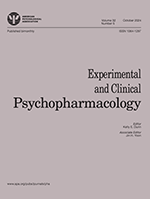
“While marijuana use is prevalent among persons with HIV (PWH), few studies have examined the relationship between marijuana use and HIV treatment outcomes independent of alcohol and other drug use.
METHODS:
We conducted a prospective cohort study to examine the relationships between frequency of marijuana use and antiretroviral therapy (ART) adherence and viral suppression in patients enrolled in the Johns Hopkins HIV Clinical Cohort between September 2013 through November 2015 (N=1377). We categorized marijuana use as no use, none in the last 3months, monthly use or less, weekly/daily. Our outcomes of interest were use of ART, ≥90 ART adherence, and viral suppression (HIV1-RNA<200 copies). We conducted multivariable analyses to examine associations between the frequency of marijuana use and our treatment outcomes, using generalized estimating equations to account for repeated measures. Other independent variables of interest included alcohol use, other drug use, and depressive symptoms. Analyses were adjusted for age, race, sex and HIV acquisition risk factor.
RESULTS:
In multivariable analyses we found no statistically significant association between frequency of marijuana use and our treatment outcomes. Alcohol use, other drug use and depressive symptoms were associated with lower odds of ART adherence and viral suppression.
CONCLUSIONS:
In this sample of PWH in care, frequency of marijuana use independent of other substance use does not appear to be associated with negative HIV treatment outcomes. Our results indicate that unlike alcohol, other substances and depression, marijuana use may not be a barrier to the effective treatment of HIV.”
https://www.ncbi.nlm.nih.gov/pubmed/29021107
http://www.journalofsubstanceabusetreatment.com/article/S0740-5472(17)30225-8/fulltext










